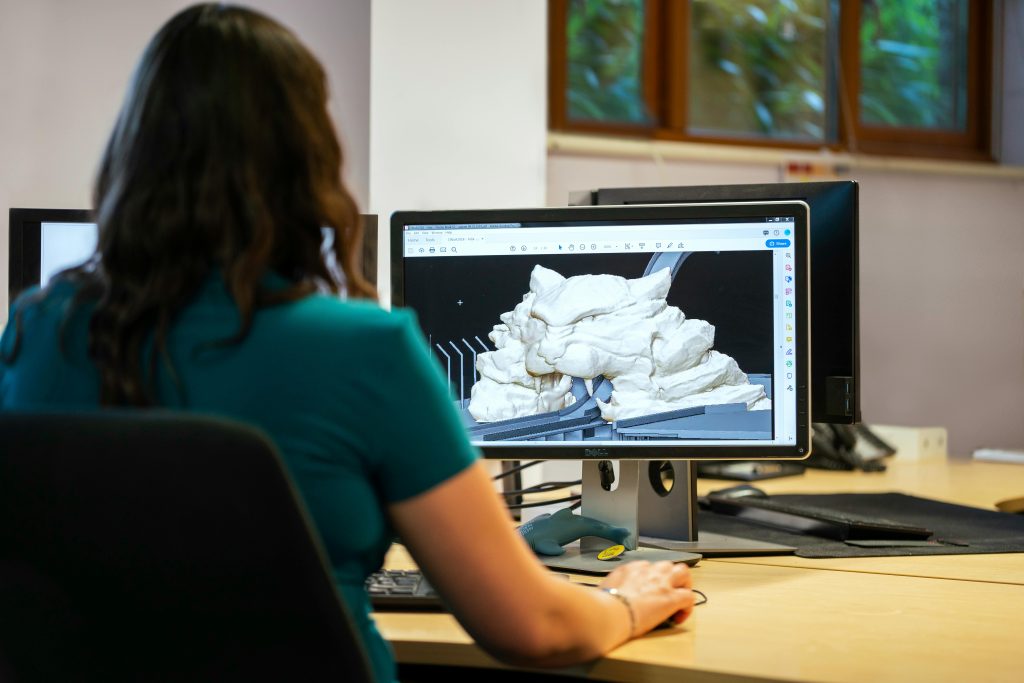1. Introduction
Graphics hardware refers to the physical devices and electronic components responsible for generating, displaying, and interacting with images created by computers. It acts as a bridge between the digital world of numbers and instructions (inside the computer) and the visual world of pictures, animations, and graphics (seen by users).
Whenever you view a game, watch a movie, or interact with a 3D design, it is the graphics hardware that processes the digital data and converts it into visual output. Apart from display, it also includes devices for input (like touch screens, light pens, or scanners) and output (like printers or plotters), making it central to human-computer interaction.
2. Display Devices
a. Raster Scan Displays
- The most widely used display technology in monitors and TVs today (CRT, LCD, LED).
- The screen is divided into a grid of pixels (picture elements).
- An electron beam (in CRT) or backlight (in LCD/LED) refreshes the screen line by line, starting from the top-left corner to the bottom-right.
- This process repeats many times per second (known as refresh rate, e.g., 60 Hz, 120 Hz).
Advantages:
- High-quality images and smooth color representation.
- Can display complex scenes, photos, and videos.
Disadvantages:
- Requires a frame buffer memory to store pixel values.
- Memory demand increases with higher resolution and more colors.
b. Random Scan (Vector) Displays
- Instead of scanning the whole screen line by line, the electron beam directly draws lines and curves wherever needed.
- Mostly used in older CAD systems, oscilloscopes, and engineering applications.
Advantages:
- High-quality line drawings (sharp and smooth).
- Less memory required (only store line end-points, not all pixels).
Disadvantages:
- Cannot handle complex images or filled shapes efficiently.
- Not suitable for modern multimedia or gaming.
c. LCD / LED / OLED Panels
- LCD (Liquid Crystal Display): Uses liquid crystals controlled by electrical signals to control light. Needs a backlight.
- LED (Light Emitting Diode): Similar to LCD but uses LEDs for backlighting, giving better brightness and contrast.
- OLED (Organic LED): Each pixel emits its own light. Offers deep blacks, high contrast, and flexibility (used in premium smartphones and TVs).
Applications:
- Laptops, smartphones, TVs, tablets, digital watches, etc.
d. 3D & VR Displays
- Stereoscopic Displays: Provide depth perception by showing slightly different images to each eye.
- Head-Mounted Displays (HMDs): Used in Virtual Reality (VR) headsets to immerse users in 3D environments.
- Augmented Reality (AR) Glasses: Overlay computer graphics on the real-world view.
3. Graphics Input Devices
Input devices allow users to communicate with graphics systems.
- Keyboard & Mouse – Basic input for commands, drawing, and selection.
- Light Pen – Detects the screen position by sensing the electron beam (used in early graphics systems).
- Digitizer / Graphics Tablet – Designers use a stylus for precise sketches and CAD work.
- Touch Screen – Allows direct finger or stylus input; widely used in smartphones and kiosks.
- Trackball, Joystick – Useful for gaming, 3D navigation, and simulations.
- 3D Scanners – Capture real-world objects and convert them into 3D models for design or animation.
4. Graphics Output Devices
- Printers: Produce a hard copy of images and designs.
- Plotters: Used for large engineering drawings, blueprints, and CAD applications.
- 3D Printers: Transform 3D computer models into physical objects (prototypes, tools, medical models).
5. Frame Buffer
- A dedicated video memory that stores the color and intensity of each pixel on the screen.
- The size depends on resolution and color depth.
Example:
- Resolution = 1920 × 1080
- Color depth = 24 bits (3 bytes per pixel: R, G, B)
- Memory required ≈ 1920 × 1080 × 3 ≈ 6 MB
The higher the resolution or the richer the color, the larger the frame buffer.
6. Graphics Processing Unit (GPU)
- A specialized processor designed to accelerate graphics rendering.
- Performs operations such as shading, transformations, texture mapping, lighting, and animation.
- Modern GPUs have thousands of parallel cores, making them powerful not just for graphics but also for scientific simulations, AI, and cryptocurrency mining.
Key Features:
- Real-time 3D rendering.
- Hardware support for physics and lighting.
- Highly parallel structure, faster than CPU for certain tasks.
7. Graphics Pipeline (Hardware Perspective)
The pipeline is the sequence of steps through which graphics data flows before being displayed.
- Input: Vertex data and geometry from CPU.
- Geometry Processing: GPU calculates transformations, lighting, and projection.
- Rasterization: Converts geometry (lines, triangles, polygons) into pixels.
- Fragment Processing: Applies shading, textures, and color blending.
- Display Output: Final image stored in the frame buffer and sent to the monitor.
8. Interaction & Other Components
- Video Controller: Hardware circuit that reads pixel values from frame buffer and sends them to the display.
- Graphics Cards: Combine GPU, frame buffer (VRAM), cooling system, and ports like HDMI, DisplayPort, VGA.
- VR & AR Hardware: Sensors, cameras, and motion trackers used for immersive experiences.
Key Points to Remember
- Raster scan is the dominant display system today.
- Random scan/vector displays are rare but historically important.
- Frame buffer memory increases with resolution and color depth.
- GPUs are the heart of modern graphics systems, making real-time gaming, 3D design, and simulations possible.
Summary
Graphics hardware includes all devices and circuits involved in producing and interacting with images. From display technologies (CRT, LCD, OLED, VR) to input devices (touch screens, light pens, scanners), output devices (printers, plotters), and specialized processors like the GPU, each component plays a critical role.
Understanding graphics hardware is essential for anyone working with computer graphics, gaming, simulation, or multimedia applications, since efficient design and programming depend on knowing how the hardware works.

